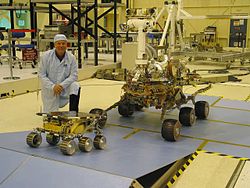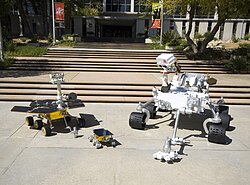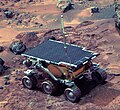Comparison of embedded computer systems on board the Mars roversThe embedded computer systems onboard Mars rovers are designed to withstand high radiation levels and large temperature changes in space. For this reason their computational resources are limited compared to systems commonly used on Earth.[1] In operationDirect teleoperation of a Mars rover is impractical, as the round trip communication time between Earth and Mars ranges from 8 to 42 minutes and the Deep Space Network system is only available a few times during each Martian day (sol).[1] Therefore, a rover command team plans, then sends, a sol of operational commands to the rover at one time.[1] A rover uses autonomy software to make decisions based on observations from its sensors.[1] Each pair of stereo images for the Sojourner rover could generate 20 3D navigation points. The Mars Exploration Rovers can generate 15,000 (nominal) to 40,000 (survey mode) 3D points.[1] Performance comparisonsWith the exception of Curiosity and Perseverance, each Mars rover has had only one on-board computer. Both Curiosity and Perseverance have two identical computers for redundancy. Curiosity is, as of February 2013, operating on its redundant computer, while its primary computer is being investigated for signs of failure.[2][needs update]
Mars rovers
See alsoReferences
External links
|
Portal di Ensiklopedia Dunia





















